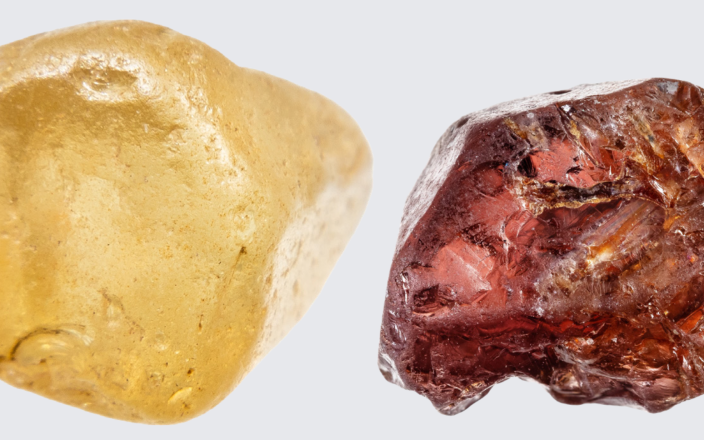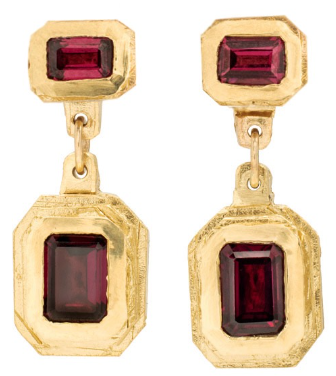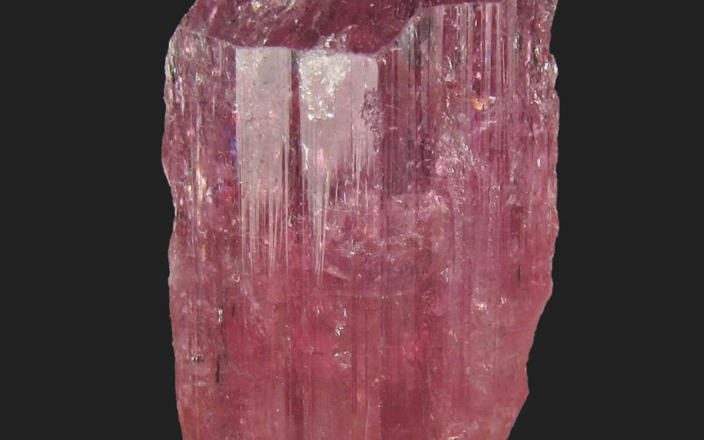
While sapphires, opals, pearls, and diamonds often take centre stage in the world of gemstones, Australia hides a treasure trove of lesser-known gems. This month, we uncover the allure and beauty of amethyst, chrysoprase, jade, topaz, emerald, and garnet—the other Australian gemstones that deserve their moment in the spotlight. Explore these unique and captivating gems located within Australia’s diverse landscapes.
Amethyst
Amethyst is a beloved gemstone worldwide. Australian amethyst, as described by Scott and Kendall Langford from Langford Gems and Lapidary, does not significantly differ from amethyst found in other parts of the world. It is typically discovered in Western Australia, particularly in the Ashburton region, known as Wyloo amethyst from Wyloo Station. However, the faceting-grade amethyst from Australia often originates from the New England District and Stanthorpe, New South Wales, where it has naturally tumbled in creek beds.
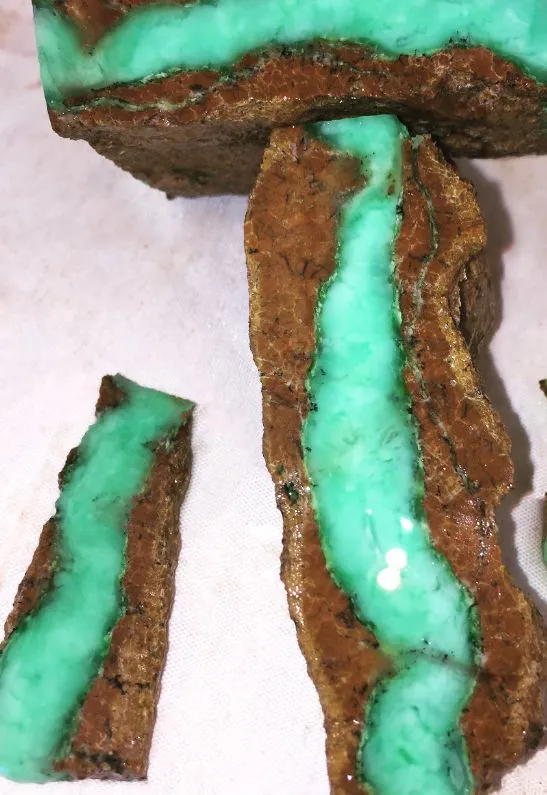 Chrysoprase supplied by Yerilla Fine Jewellery
Chrysoprase supplied by Yerilla Fine Jewellery
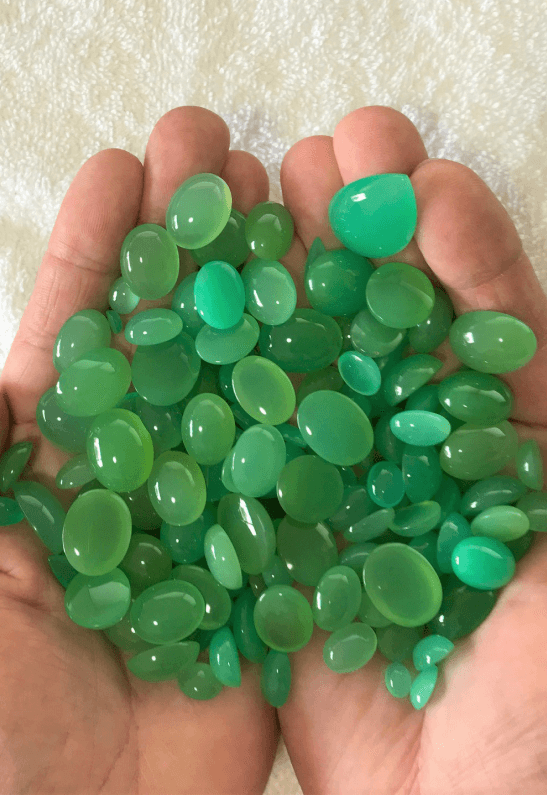 Chrysoprase supplied by Yerilla Fine Jewellery
Chrysoprase supplied by Yerilla Fine Jewellery
Chrysoprase
Australian chrysoprase, once a secret gemstone, is now making waves in the jewellery industry. It is exceptionally rare, highly valued, and a treasure sought by collectors and fine jewellers. Yerilla Fine Jewellery, a small family-owned company proudly Western Australian-owned, controls and operates 100 percent of the famous Yerilla deposits. John Wibberley, the director of Yerilla Fine Jewellery, is committed to overseeing every aspect of the Australian chrysoprase process.
Chrysoprase, a cryptocrystalline form of silica and the most precious member of the chalcedony family, derives its distinctive green colour from traces of nickel. This gem possesses a unique ability to reflect and refract light, giving it a luminous, almost living quality. With a hardness rating of 6.5 – 7 on the Mohs scale, chrysoprase is an excellent gemstone for jewellery. Its specific gravity falls between 2.65 – 2.90, with higher specific gravity indicating more vibrant and flawless stones. Yerilla chrysoprase is praised as one of the finest in the world, alongside the Marlborough deposits in Queensland. AAA+ chrysoprase is often compared to and mistaken for Imperial Burmese jadeite due to its stunning beauty, high translucence, and lack of inclusions.
Jade
Australian jade primarily comes in nephrite form, distinguishing it from other jade varieties. Two primary sources are Cowell, South Australia, and Tamworth, New South Wales. Cowell jade is characterised by its darker, richer, and opaque appearance, whereas Tamworth jade is lighter and more medium green, with slight translucence. “New Zealand produces a richer more apple green nephrite jade, as does British Columbia in Canada. Jadeite is a different chemical composition to nephrite jade and the most common jadeite is the Chinese jade,” says the Langfords.
Topaz
Australian topaz is a standout gemstone in the Australian landscape. This captivating gem is unearthed in the renowned locations of O’Brien’s Creek, Queensland, and Killercrankie Bay, Tasmania. What sets Australian topaz apart is its remarkable purity, often presenting as large, pristine specimens ranging from colourless to the most enchanting sky-blue hues. The discovery of topaz is not limited to professional miners—Fossickers often stumble across the gemstone. In addition to the classic colourless and blue variations, Australian topaz surprises with its delicate pink and golden yellow shades, adding to its allure and desirability.
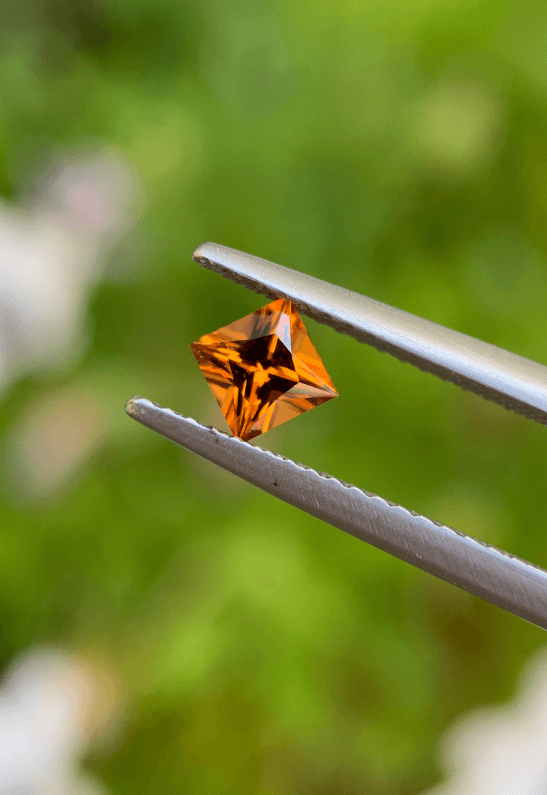 Northern Territory Hessonite garnet faceted princess cut supplied by Langford Gems
Northern Territory Hessonite garnet faceted princess cut supplied by Langford Gems
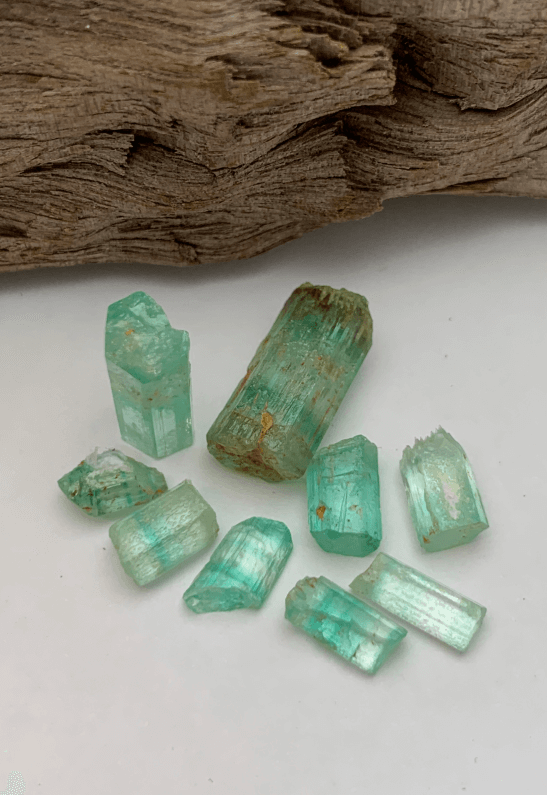 Torrington emerald crystals supplied by Langford Gems
Torrington emerald crystals supplied by Langford Gems
Emerald
Australian emeralds, while less known than their South American counterparts, have distinct and unique characteristics. They were mainly found in Western Australia and Torrington, New South Wales. However, Torrington emerald mines have been exhausted, and this material is no longer readily available. Torrington emeralds are characterised by their pale and stripey appearance due to the presence of colourless beryl with emerald banding. Western Australian emerald, found in Poona, Menzies, and the Pilbara region, is generally heavily included and not of high faceting quality, although exceptions exist.
Garnet
Garnets, often discovered while mining for sapphires are a byproduct of the process. In Australia, hessonite garnets in the Northern Territory stand out due to their rich iron content, resulting in a range of orange tones from golden honey to burnt orange. “The red to purple-red garnets, almandine and pyrope, are also found in Australia in numerous areas. They’re quite common and can be found in micro-size to large pieces. Harts Range garnet is the most popular variety of garnet in Australia for fossickers and enthusiasts,” says the Langfords.
“Australian gemstone mining is highly regulated in Australia and therefore [is] seen to be ethically mined, thus giving them their modern-day appeal. And as commercial mining isn’t prevalent in Australia for many of these gemstones, there is still good availability. Often you are purchasing this material from people who dug it out of the ground themselves. True Australian-made,” they add.
These hidden treasures, from amethyst to garnet, deserve recognition and celebration. So, when your customers are considering their next jewellery purchase, or you are looking for something new in your inventory, remember the attraction of these gems—nature’s unique gifts, waiting to exude beauty and individuality. Embrace the extraordinary, and let these other Australian gemstones become the stars of your jewellery collection.
